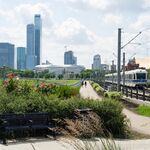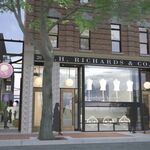It's weird that in the spring they had finally brought back 5 minute peak frequencies to the Clareview leg for the first time since Metro Line opened, brought it back down to whatever it was for summer construction, and then decided in the fall that 6 minutes was suitable as we see transit volumes almost back to pre-pandemic levels. Clareview Park and Ride was at capacity the first snowfall.
Let's hope for frequency adjustments in December back to 5 minutes peak 10 minutes midday for Capital Line. Metro Line which is getting noticably busy north of Churchill can be bumped up to 10 minutes. If their reason is to have more consistent frequencies, it's anything but now. 6 minutes peak, 12 minutes otherwise weekdays. Saturdays it's 20 minutes until noon, 12 minutes to the end of service. Sunday 15 minutes from start to end of service. Why is Sunday before noon more frequent than Saturday before noon?
Actually, it was last Fall I believe when 5 minute peak/ 10 minute midday service was reinstated. It was in the Spring that it dropped to 6 minute/ 12 minute and has remained at that, at best.
Saturday service is 12 minutes all day. Not sure where you dug up 20 minutes from. A temporary change for maintenance activities?
It should be noted that before the midday and Saturday was downgraded to 12 minutes from 10 minutes, weekday and Saturday evenings would drop to 15 minute service. Now they are a constant 12 minutes. Less service at certain times. More at others. To say nothing of the Metro line moving up to 12 minute frequency from 15 minutes.
As for why, I would hazard partially why is it is the cost savings of 2 trains at peak, 1 train off peak, when ridership isn't 100% back to pre-Covid levels.
However, I also think LRV availability could be part of it. The U2's aren't getting any younger. 20 LRV's were purchased for the Metro line. 5 trains x 3 car trains means 15 cars are in service. Increasing frequency to 10 minutes would mean 18 cars needed, leaving a slim 10% spare ratio.
For the Capital Line, 5 minute service requires 16 trains x 4 cars = 64 cars out of 74. That is a 13% spare ratio. It's been done, but when you read through the LRV procurement profile in the Capital budget, you get the sense that the increasing age of the U2 (almost 40 years for the youngest, close to 45 years of operation for the oldest) is a concern and a liability and a 13% spare ratio isn't cutting it. It's not even just the U2's. A few winters back, 2 SD's were stored outside on track with no wire, over the winter with parts missing that went onto other cars, while I presume these cars waited for long lead time parts.
Right now, 5x3 Metro and 14 x 4 Capital Line trains require 71 cars, which is about a 25% spare ratio. Certainly, there is some reliability advantage for riders if the LRV fleet isn't stretched to it's max and the vehicles are getting the proper maintenance they need.
The reduced demand on the fleet also means more air conditioned trains as U2 use can be minimized on hot days.




